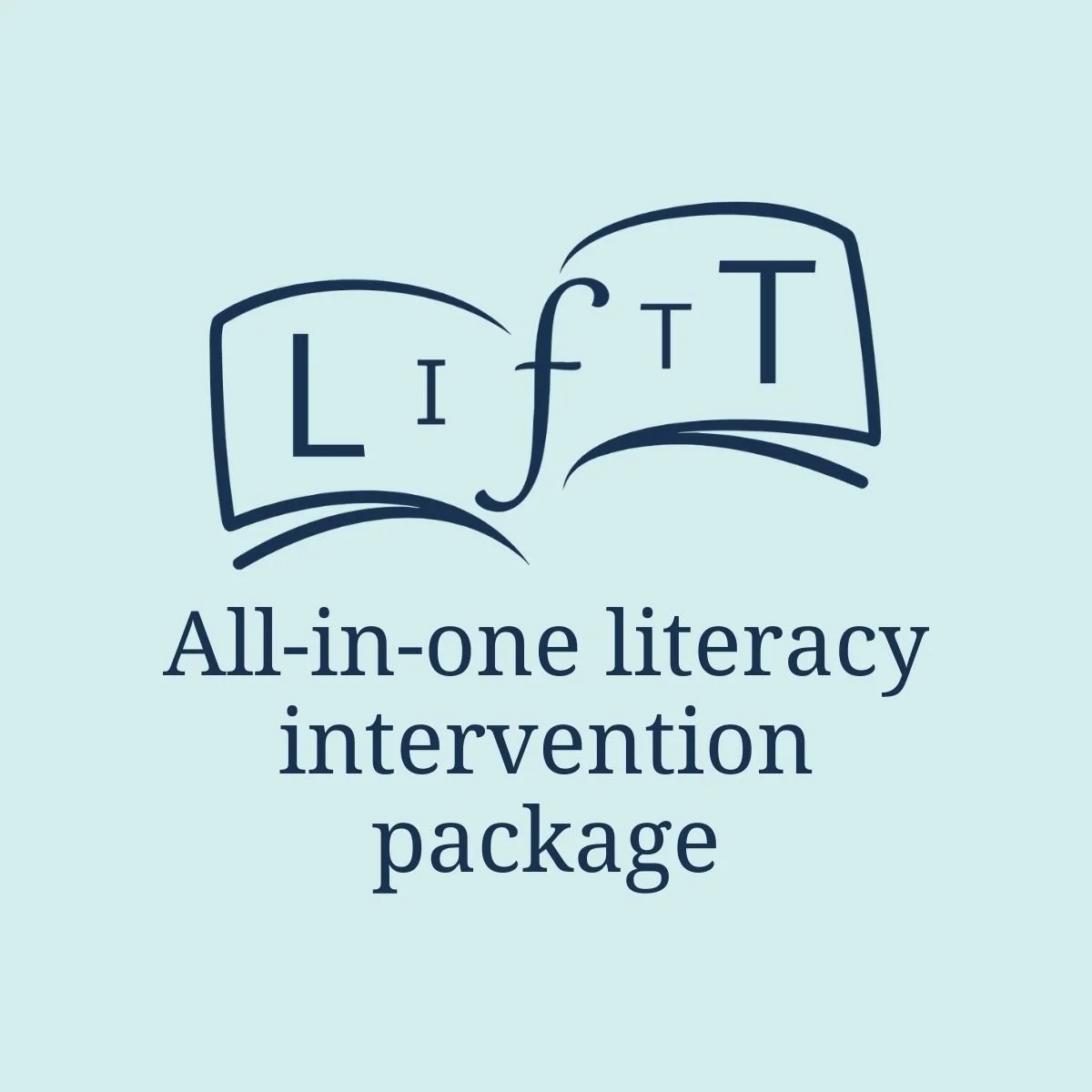What You’ll Get
-
28-page booklet
Introduces the specific literacy needs of teens and tweens, explains the principles behind LIfTT, describes the LIfTT modules, and gives an overview of implementation.
-
Assessment Manual:
65-page manual
Guides teachers through the process of testing students, inputting data and creating a customised intervention plan.
Test material for teachers:
Booklet for recording students’ oral responses.
Test questions for spelling and dictation assessments.
Answer booklets for students:
Booklet for students to write their responses.
Tools for creating a customised intervention plan:
LIfTT Intervention Planning Tool – an Excel spreadsheet for the teacher to input student data. It automatically outputs a summary of a student’s strengths and weaknesses, and a list of modules and topics for them to study.
LIfTT Intervention Plan template to complete for each student
-
471-page guide
Practical guidance for how to implement LIfTT, including suggestions for timetabling and lesson planning.
Packed with information about how to teach each topic, including lists of resources, instructions for games, learning objectives, example dialogues with students, and explanations of concepts and terminology.
All Modules Are Included
For a detailed description of each module and to see sample pages, click on the module title to view the individual product page.
-
Students will learn how to apply knowledge of phonics, word structure, spelling patterns and etymology to words that they find challenging.
-
Students will learn the core concepts and terminology that form the basis of all other modules.
-
Students will learn the principles and conventions that lie behind English spelling.
-
Students will learn the main word classes and the role of affixes in changing word class.
-
Students will learn the graphemes that are commonly used to spell vowel sounds.
-
Students will learn many of the unusual graphemes that represent consonant sounds.
-
Students will learn many of the more unusual graphemes that represent vowel sounds.
-
Students will learn many of the common ‘rules’ governing how to select the correct grapheme.
-
Students will learn the meaning and spelling of commonly misspelled homophones and confusable words.
-
Students will learn common word-endings that don’t follow the usual grapheme-phoneme correspondences.
-
Students will learn strategies for breaking words into manageable chunks.
-
Students will learn the meaning of various bases that derive from Greek and Latin, and advanced vocabulary that includes these bases.
-
Students will learn the meaning of various prefixes and bases that derive from Latin, and advanced vocabulary that includes these word-parts.
-
Students will learn accurate use of capital letters, full stops, question marks, exclamation marks, speech marks, apostrophes and commas.
-
Students will learn to improve specific aspects of their handwriting.


